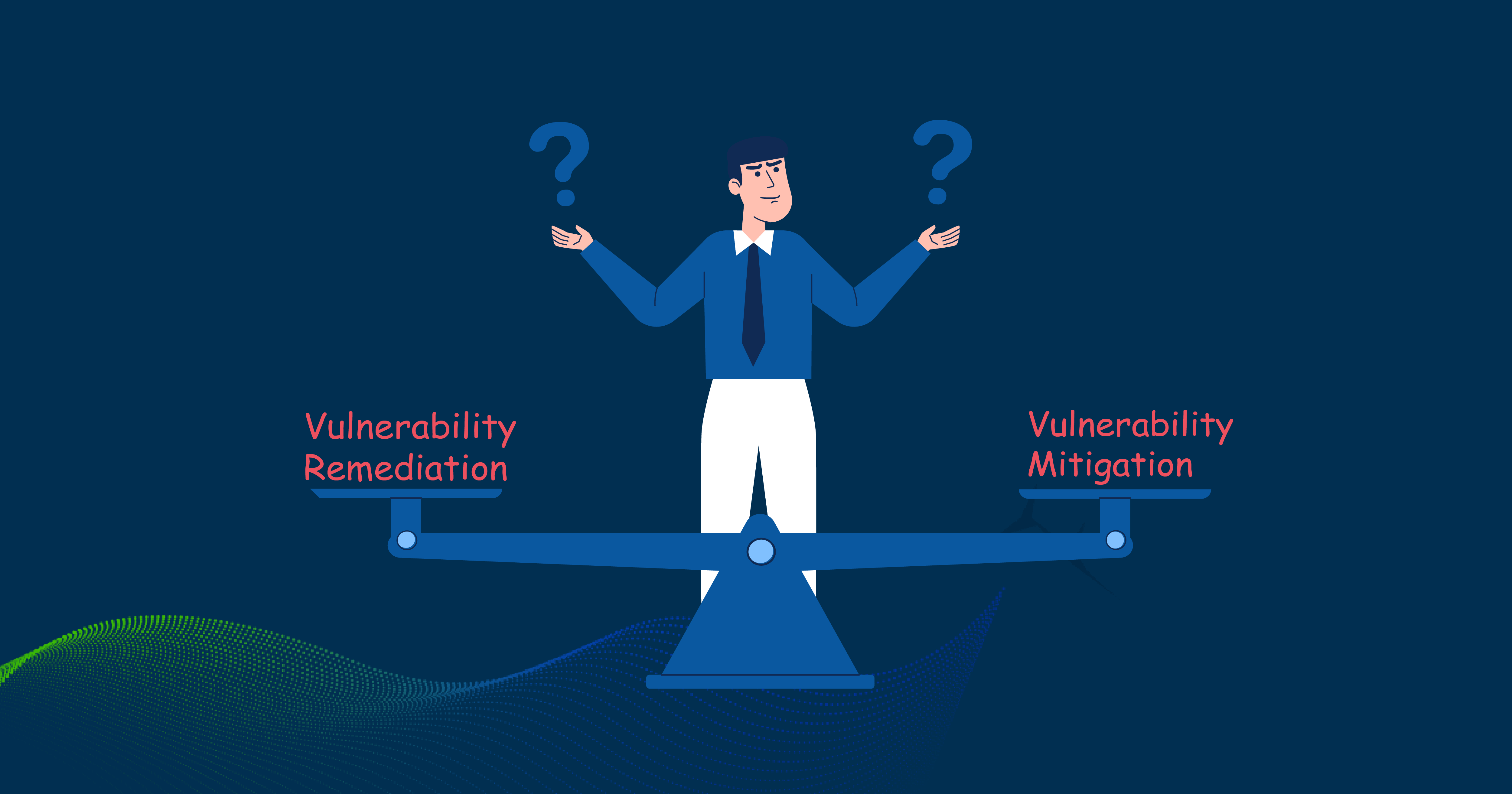In the IT security space, vulnerability mitigation, and remediation are often considered synonyms of each other. Although they sound similar, they are technically two different processes that fix a vulnerability using a vulnerability management tool.
But how exactly is vulnerability remediation different from vulnerability mitigation?
In this article, let’s understand what exactly vulnerability mitigation and remediation mean and which is more effective for securing the IT landscape, which is possible with a vulnerability management software.
What is Vulnerability Remediation?
Once the vulnerability is in detection mode, it should be remediation as soon as possible. Remediation usually happens by applying the latest patches available to devices.
When the remediation process is complete, it is advisable to run vulnerability scans again to ensure that vulnerabilities are adequately remediation.
For example: In Nov 2022, Fortinet released a security update that addressed 16 different vulnerabilities in multiple products. These security updates could remediate six highly-critical vulnerabilities.
What is Vulnerability Mitigation?
Generally, vulnerability mitigation is not a final step in the vulnerability management process. Vulnerability mitigation is much like a process where you buy time, or it acts as a temporary solution for remediating detected vulnerability.
System admin/IT admin tends to mitigate vulnerability when they don’t find available patches or are required to decrease the effect of attack surface exposure mildly.
For example: In Oct 2022, two zero-day vulnerabilities were actively in exploitation in Microsoft Exchange servers. Due to the unavailability of patches, Microsoft provided its users with mitigation steps. But was given the advice to patch as soon as the patch was available.
Vulnerability Mitigation vs Vulnerability Remediation
Consider a scenario where your organization has identified over 15,000 vulnerabilities. You have prioritized them based on their severity levels and see that not all vulnerabilities have patches.
As a sysadmin addressing critical vulnerabilities first would be essential. All the critical vulnerabilities identifiying in your organization’s IT infrastructure should be remediated since they would be most highly exploited.
A few vulnerabilities will not have a readily available patch. Therefore, those patches will be given a temporary solution so they are not in exploitation. Once a patch is in identification for that vulnerability, it should be in deployment. Deployment will be easier with a patch management software.
What’s the best approach?
It is always advisable to choose vulnerability remediation over mitigating vulnerabilities. To stay ahead of cyber-attacks, you must remediate vulnerabilities and not just mitigate them since mitigating is a temporary solution. There are high chances that mitigated vulnerability could lead to a potential threat.
Generally, mitigating should be an option when there are vulnerabilities without any available patch or if it’s a low priority. Once the patch is available, it is advisable to apply it.
Conclusion
While vulnerability mitigation and remediation play essential roles in keeping your organization safe from cyberattacks, remediating vulnerabilities definitely goes a step ahead!
Organizations can up their vulnerability remediation game by opting for automated tools that instantly remediate vulnerabilities. SanerNow is one such tool that can detect vulnerabilities and remediate them with its integrated patch management. It also provides other 100+ security controls that can secure your organization.


